Introduction
Gmail is a free email service provided by Google. In many ways, Gmail is like any other email service: You can send and receive emails, block spam, create an address book, and perform other basic email tasks. But it also has some more unique features that help make it one of the most popular online email services.
In this lesson, we'll talk about some of the features and advantages of Gmail, and we'll give an overview of the Gmail window.
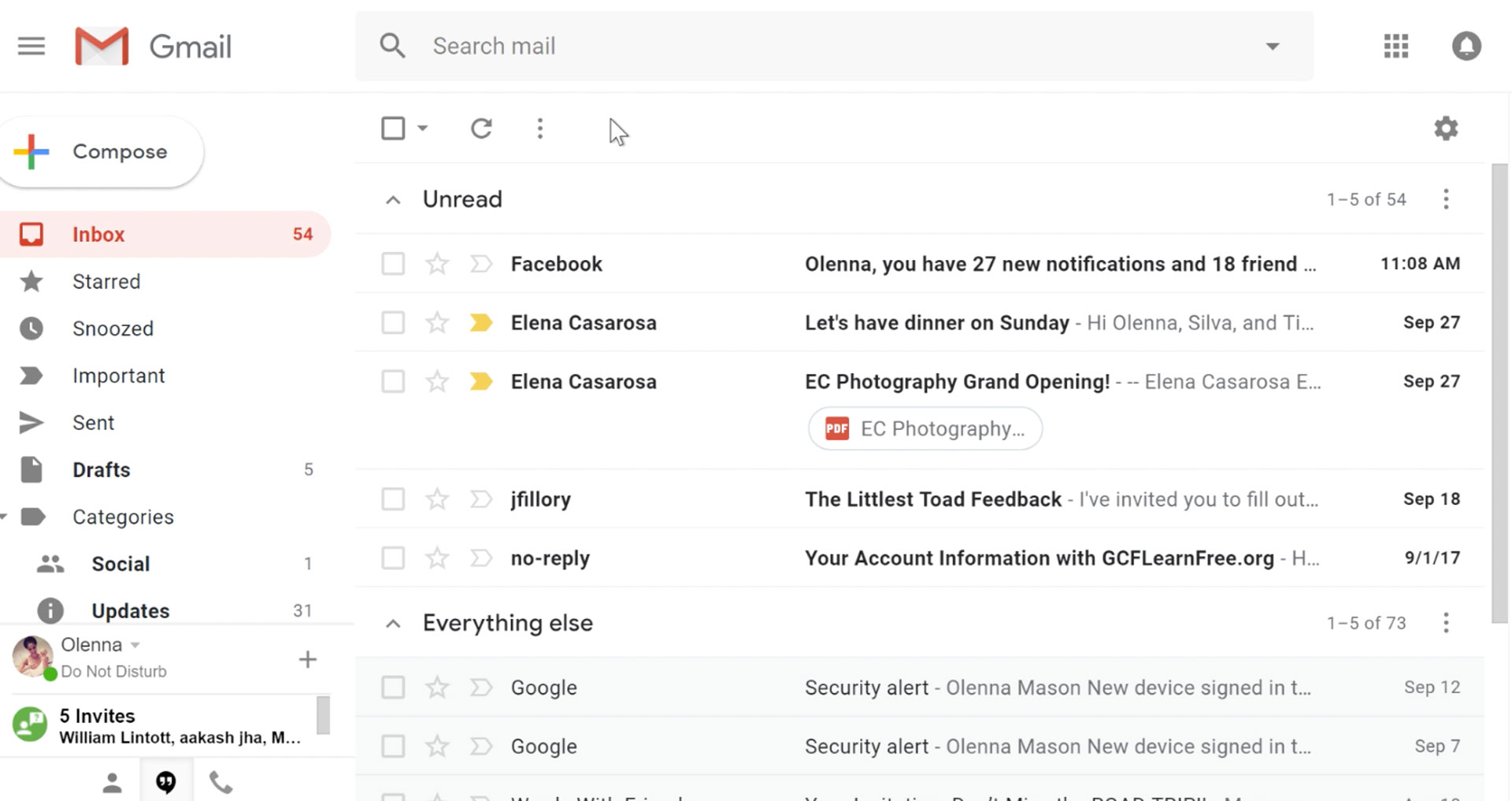
Google accounts
Creating a Google account is needed to access Gmail because it is just one of the many services offered by Google to registered users. Signing up for a Google account is free and easy, and naming your new Gmail address will be a part of the sign-up process. This means whenever you're signed in to Gmail, you are automatically signed in to your Google account. You'll be able to easily access other Google services like Google Docs, Calendar, and YouTube.
Of course, you don't have to use any of these features. You may just want to focus on email for now. However, if you'd like more information, you can review our Google account tutorial, where we talk about some of the different services Google offers and show you how to change your privacy settings.
Gmail features
Gmail offers several useful features to make your email experience as smooth as possible, including:
- Spam filtering. Spam is another name for junk email. Gmail uses advanced technologies to keep spam out of your inbox. Most spam is automatically sent to a separate spam folder, and after 30 days it is deleted.
- Conversation View. An email conversation occurs whenever you send emails back and forth with another person (or a group of people), often about a specific topic or event. Gmail groups these emails together by default, which keeps your inbox more organized.
- Built-in chat. Instead of sending an email, you can send someone an instant message or use the voice and video chat feature if your computer has a microphone and/or webcam.
- Call Phone. This feature is similar to voice chat, except that it allows you to dial an actual phone number to call any phone in the world. It's free to make a call to anywhere in the United States or Canada, and you can make calls to other countries at relatively low rates.
Get to know the Gmail interface
When you're working with Gmail, you'll primarily be using the main Gmail interface. This window contains your inbox, and it allows you to navigate to your contacts, mail settings, and more. Also, if you use other Google services like YouTube or Calendar, you'll be able to access them from the top of the Gmail window.
Click the buttons in the interactive below to learn about the different parts of the Gmail interface.
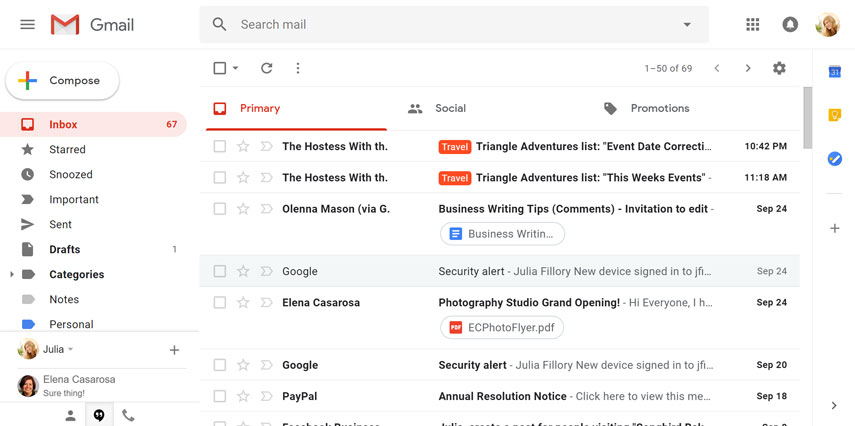
Challenge!
Answer the following questions. You can either write down your answers or just think about them.
- What are the advantages of having a Gmail account?
- Are there any features on Gmail you would use aside from email?
- Optional: If you already have a Google account, sign in, then explore the Gmail interface.
Introduction
Setting up a Gmail account is easy. You will begin by creating a Google account, and during the quick sign-up process you will choose your Gmail account name. In this lesson, we'll show you how to set up your Google account for Gmail, add and edit contacts, and edit your mail settings.
Setting up a Gmail account
To create a Gmail address, you'll first need to create a Google account. Gmail will redirect you to the Google account sign-up page. You'll need to provide some basic information like your name, birth date, gender, and location. You will also need to choose a name for your new Gmail address. Once you create an account, you'll be able to start adding contacts and adjusting your mail settings.
To create an account:
- Go to www.gmail.com.
- Click Create account.
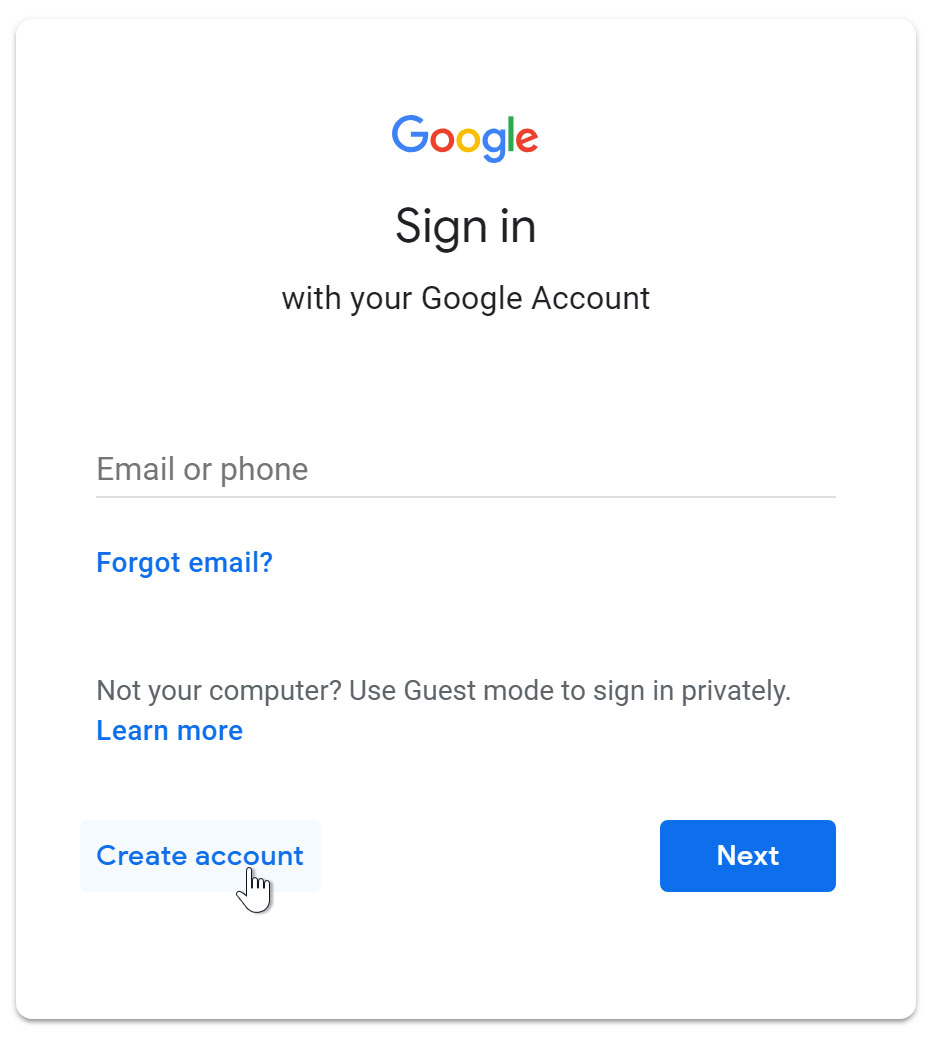
- The sign-up form will appear. Follow the directions by entering the required information.
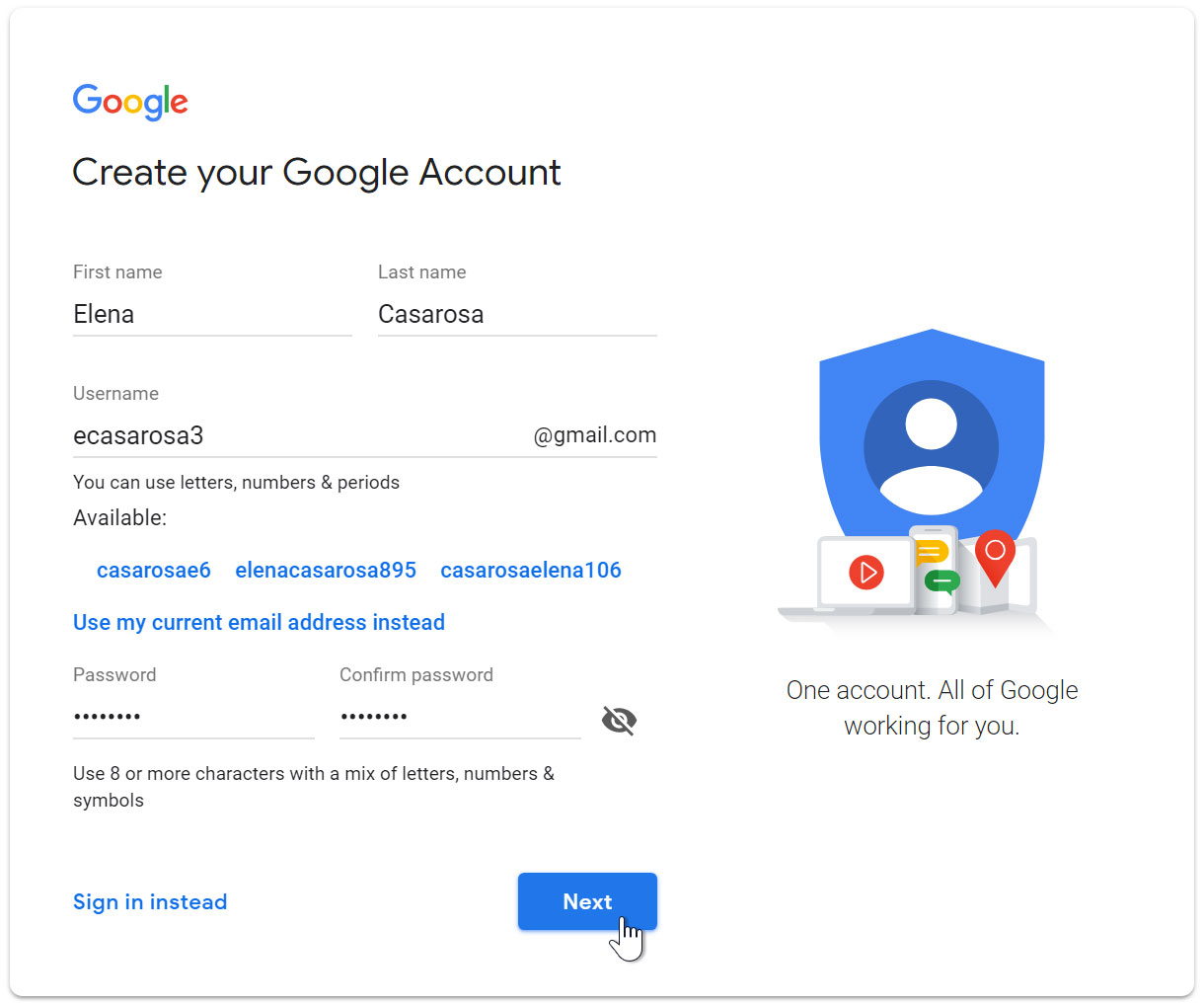
- Next, enter your phone number to verify your account. Google uses a two-step verification process for your security.
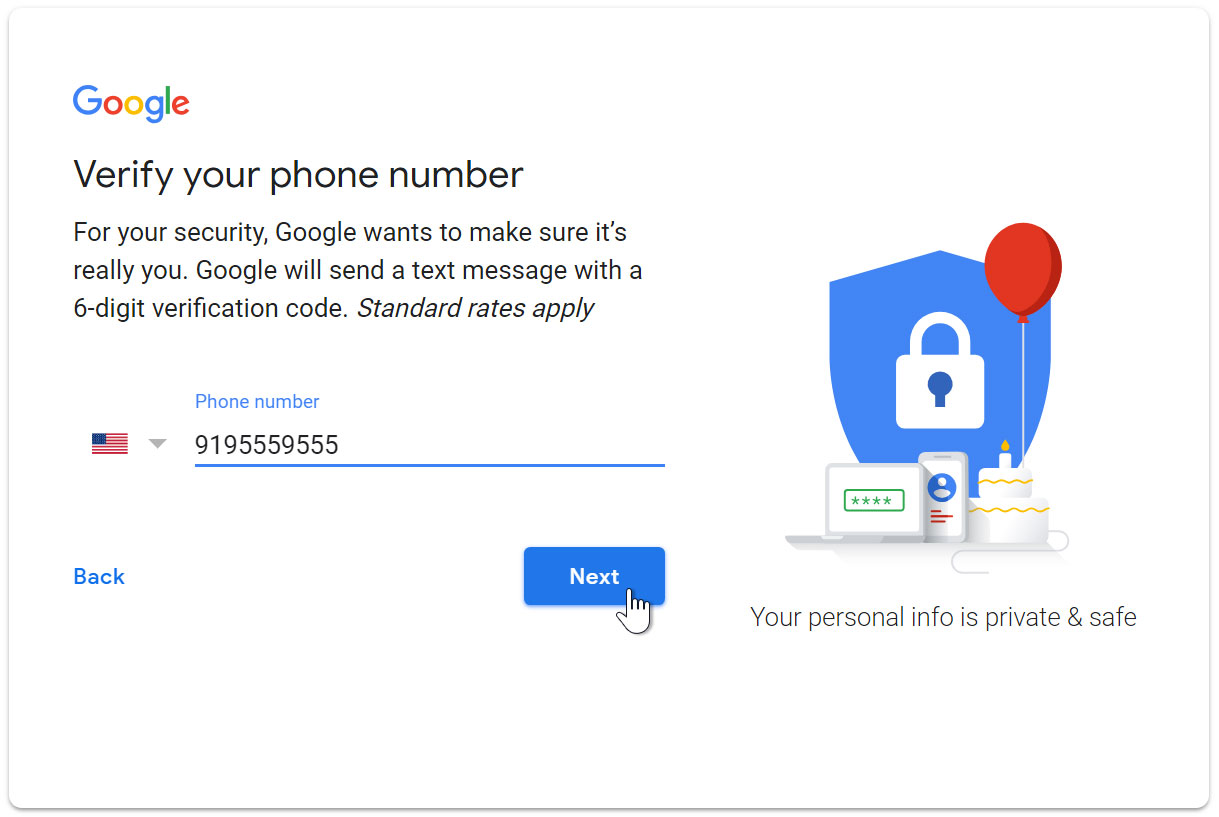
- You will receive a text message from Google with a verification code. Enter the code to complete the account verification.

- Next, you will see a form to enter some of your personal information, like your name and birthday.
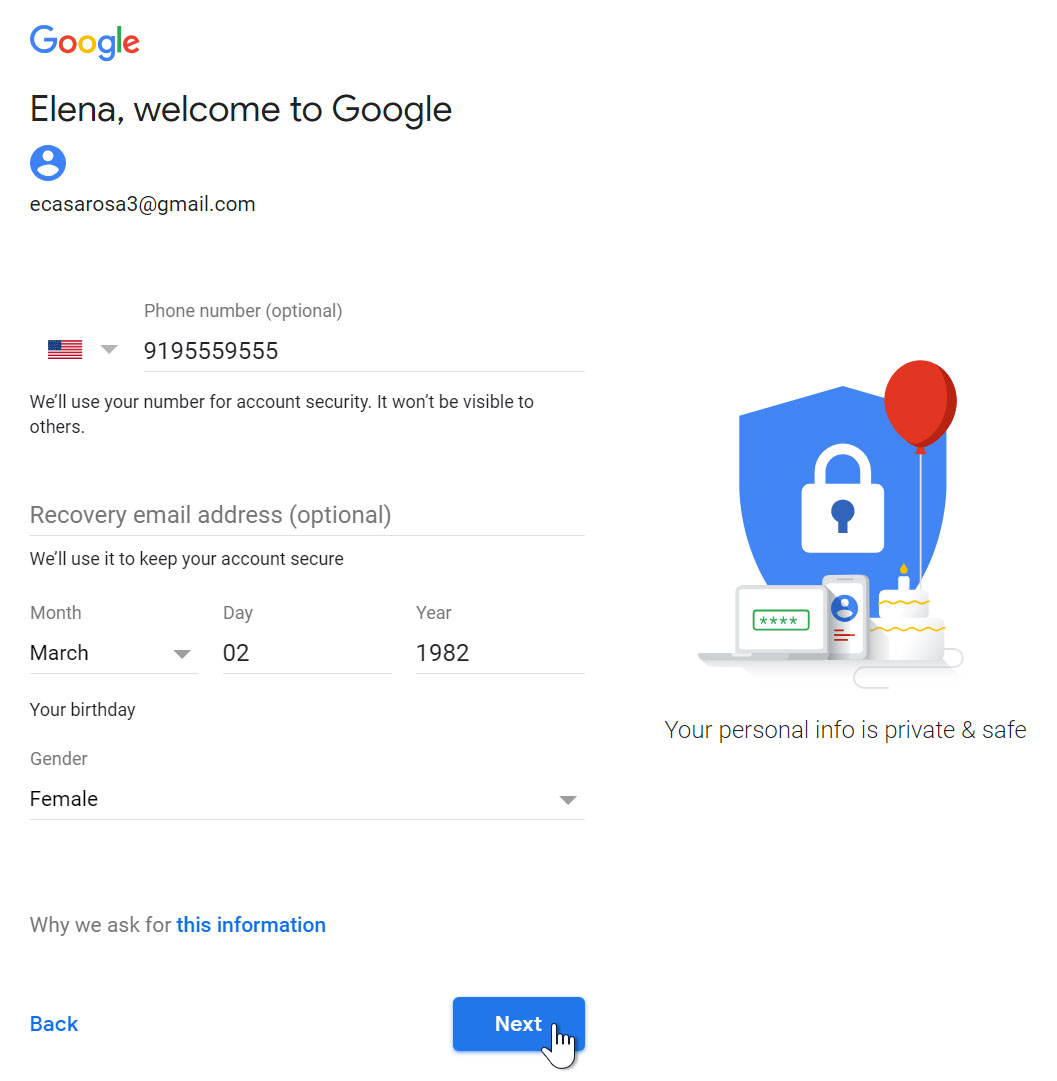
- Review Google's Terms of Service and Privacy Policy, then click I agree.
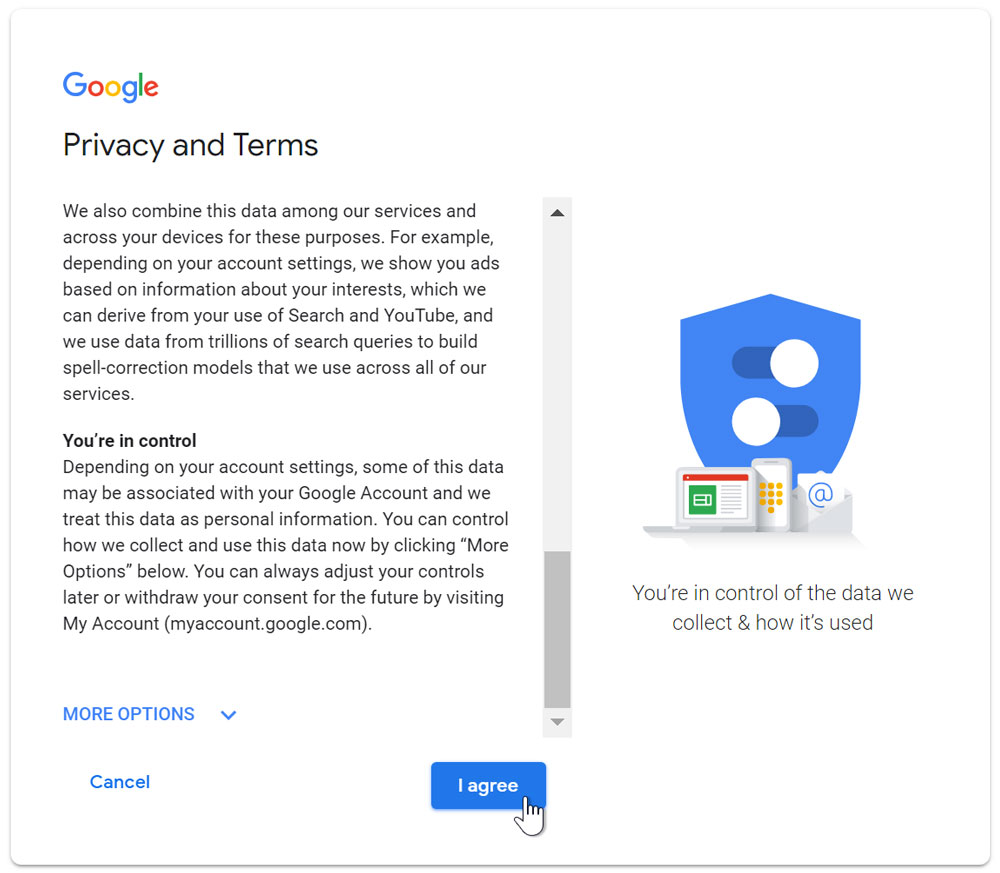
- Your account will be created.

Just like with any online service, it's important to choose a strong password—in other words, one that is difficult for someone else to guess. For more information, review our lesson on creating strong passwords.
Signing in to your account
When you first create your account, you will be automatically signed in. Most of the time, however, you'll need to sign in to your account and sign out when you're done with it. Signing out is especially important if you're using a shared computer (for example, at a library or office) because it prevents others from viewing your emails.
To sign in:
- Go to www.gmail.com.
- Type your user name (your email address) and password, then click Next.
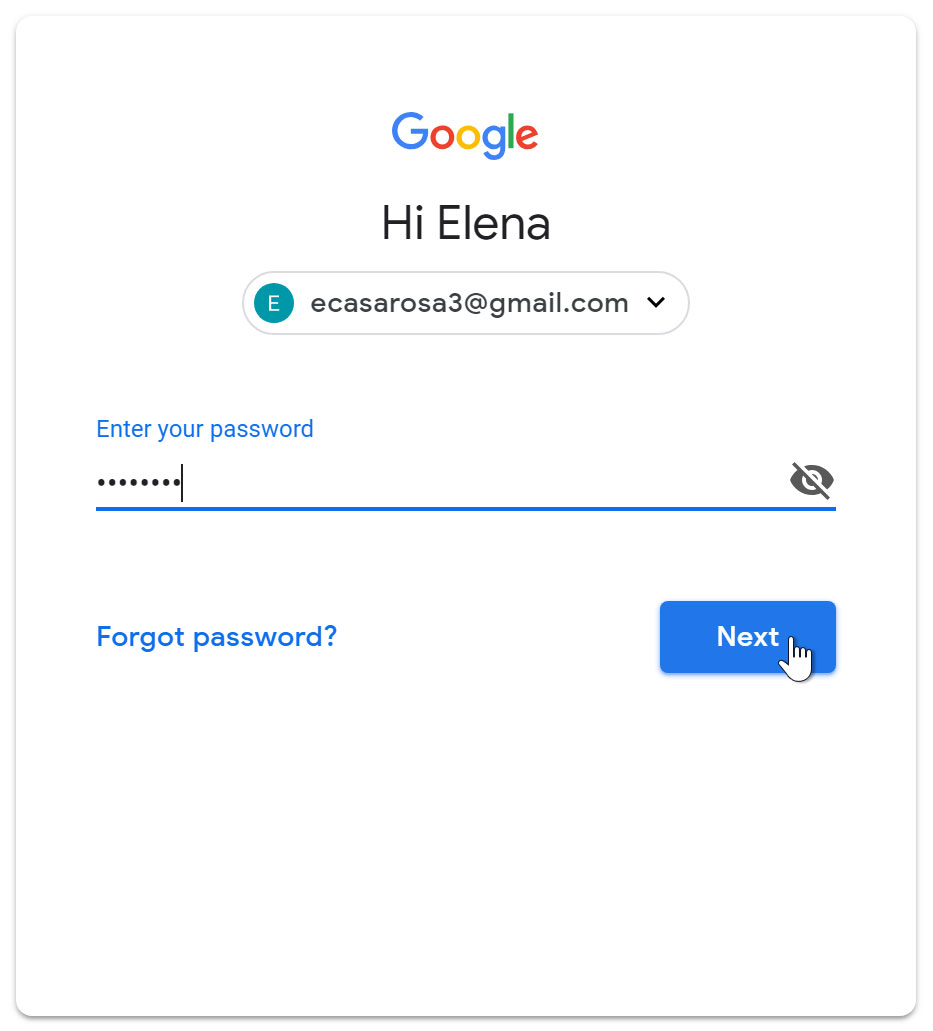
To sign out:
In the top-right corner of the page, locate the circle that has your first initial (if you've already selected an avatar image, it will show the image instead). To sign out, click the circle and select Sign out.
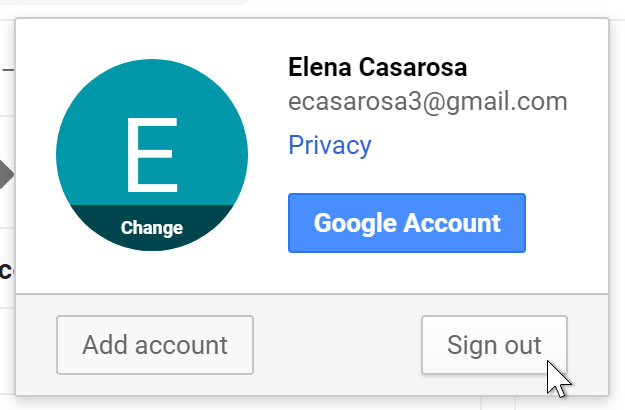
Mail settings
Occasionally, you may want to make adjustments to Gmail's appearance or behavior. For example, you could create a signature or vacation reply, edit your labels, or change the theme. These adjustments can be made from your mail settings.
To access your mail settings:
- Click the gear icon in the top-right corner of the page, then select Settings.
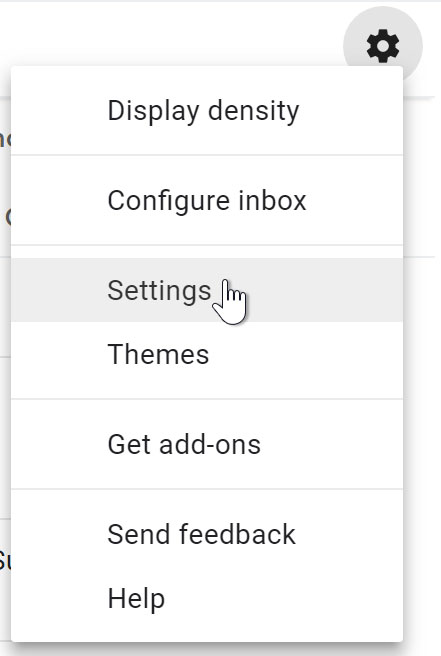
- From here, you can click any of the categories at the top to edit the desired settings.
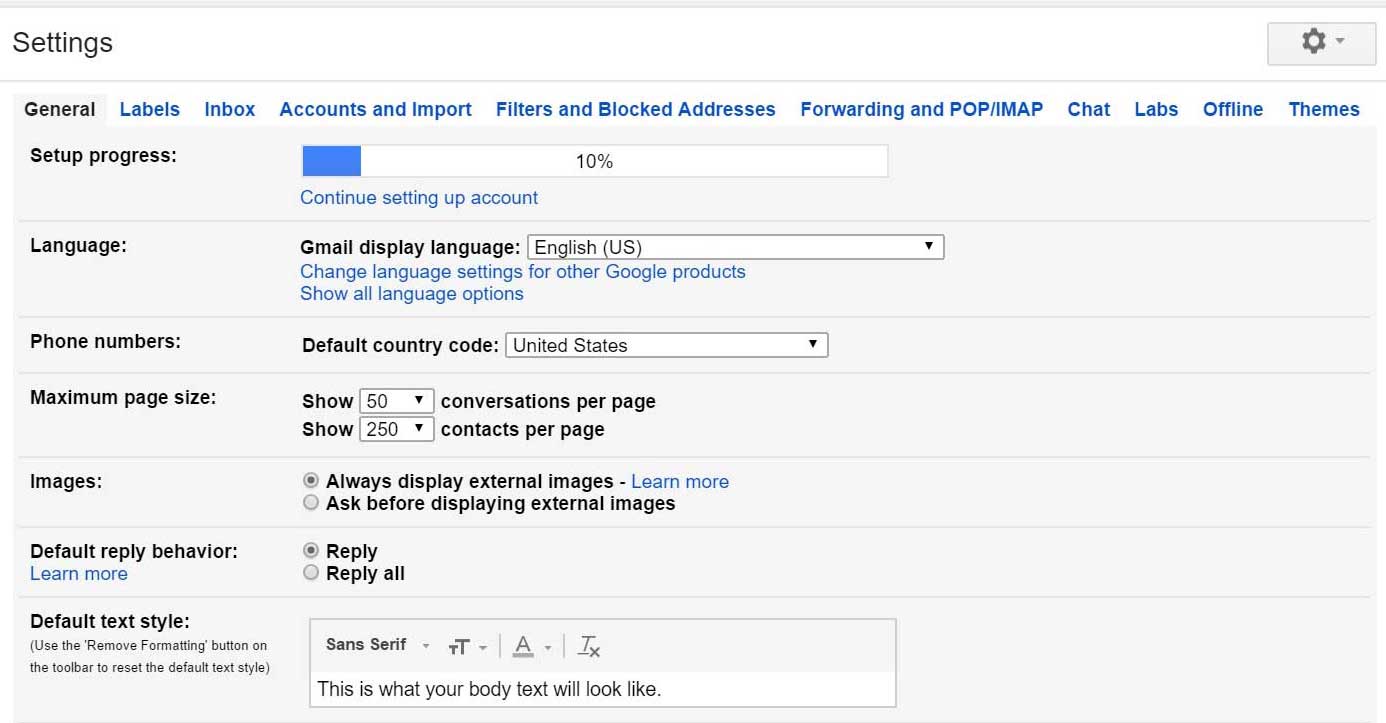
Adding contacts
Like all major email providers, Gmail lets you keep an address book of contacts so you don't have to memorize everyone's email addresses. You can also add other contact information, like phone numbers, birthdays, and physical addresses.
To add a contact:
- Click the Google apps button.
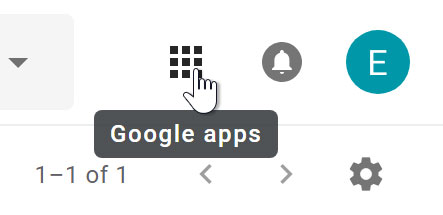
- Click the Contacts button in the drop-down menu.
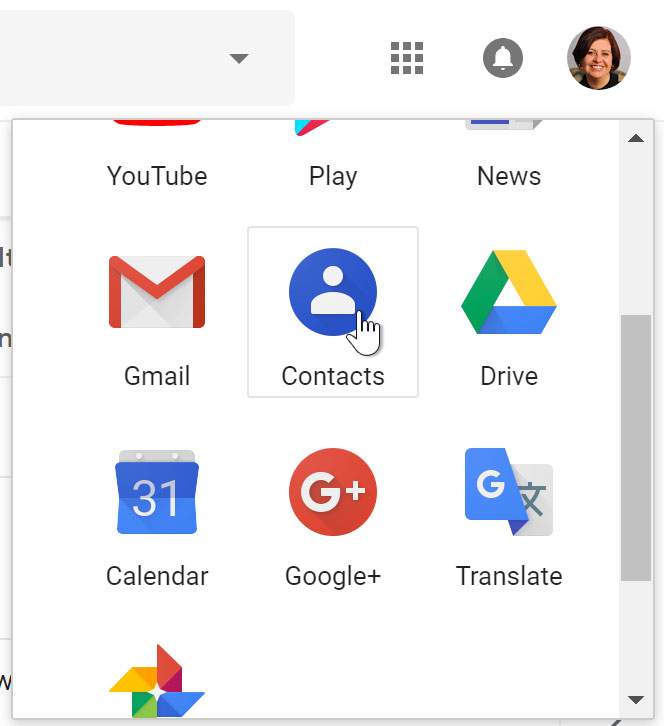
- Your contacts screen will appear. Click the Add new contact button in the lower-right corner.
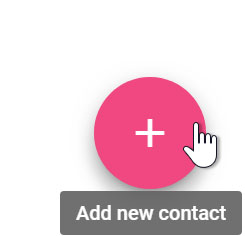
- Enter the contact information, then click Save.
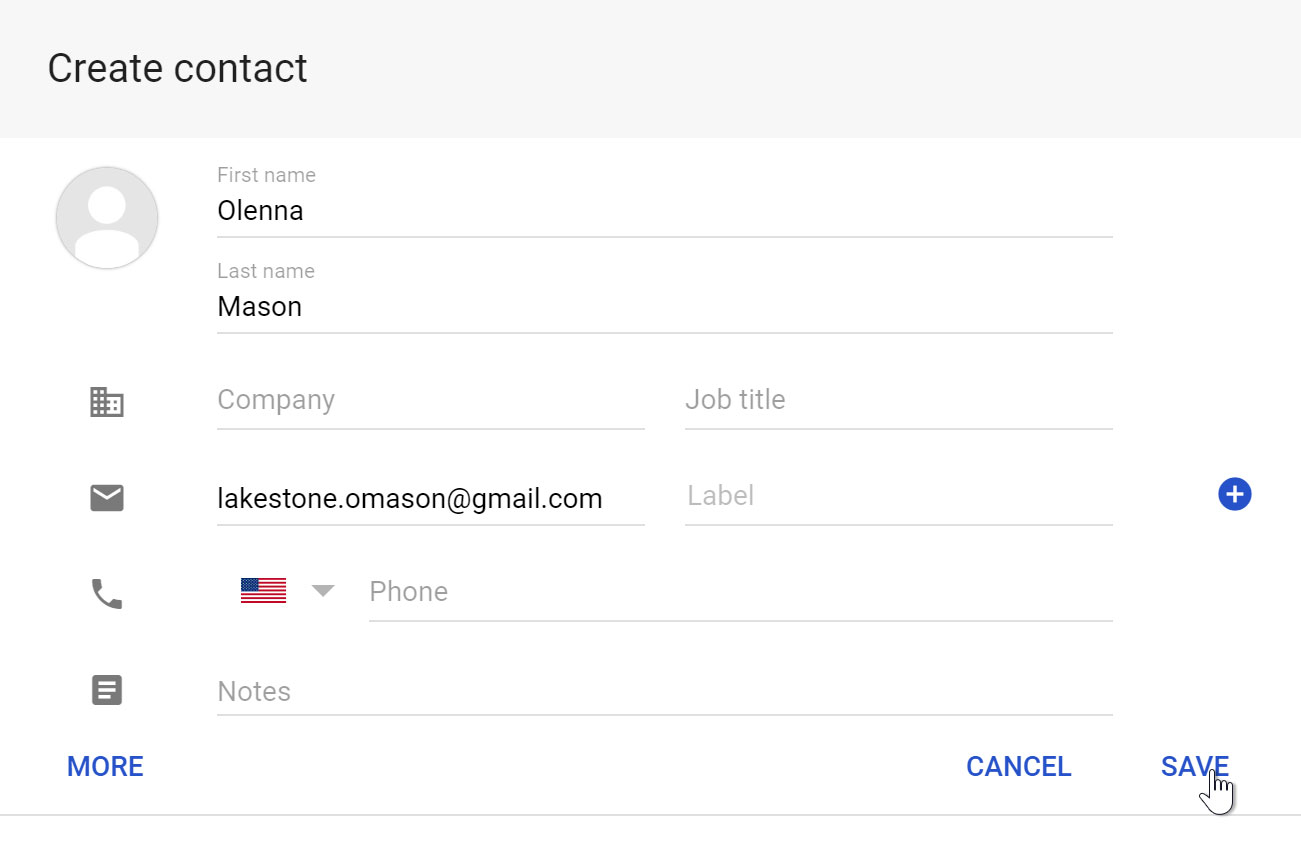
To edit a contact:
- In the Google apps drop-down menu, select Contacts.

- Locate the contact you want to edit, then click Edit Contact.

- You can now make any changes you want to the contact.

By default, when you send an email to a new address, Gmail adds the address to your contacts. You can then go to your contacts to edit the person's information as needed.
Importing mail and contacts
You may already have a contact list from another email address, and it would be a lot of work to re-enter all of this information manually. Gmail allows you to import your contacts from another email account, and you can even import all of your email messages from that account. Several email providers are supported, including Yahoo!, Hotmail, and AOL.
To add other accounts:
- Click the gear icon in the top-right corner of the page, then select Settings.
- Go to Accounts and click Add a mail account. You can then follow the instructions on the screen to import your mail.
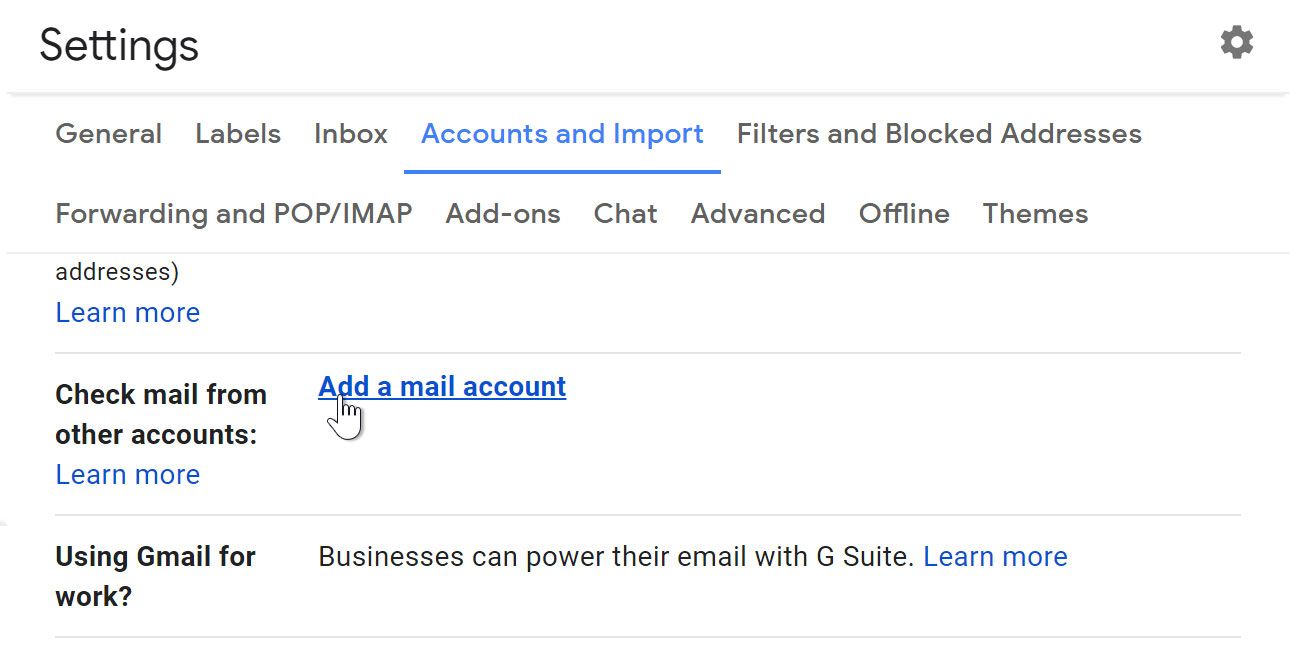
Gmail, free e-mail service offered by the American search engine company Google Inc. Google began offering Web-based e-mail accounts to select beta testers in 2004.

Since its founding, one of Gmail’s most appealing features has been that it is Web-based, so users can access their e-mail from a computer, a smartphone, or any other Internet-enabled device. Also, Gmail gives users an e-mail address that is independent of any particular Internet service provider (ISP), which makes it easier to maintain a permanent address. Other features include conversation view, in which replies to the same message are displayed in a single group, and integrated text and video chat. In February 2010 Google incorporated a social networking application, called Buzz, into Gmail. Buzz allowed users to share updates and photos with contacts in their Gmail networks in a manner similar to Facebook or Twitter, but it was not restricted by the 140-character limit that defined Twitter. The service proved relatively unpopular, however, and was discontinued in late 2011.
In January 2010 Google announced that it had detected a series of sophisticated hacking attacks, originating in China, that were directed at the Gmail accounts of Chinese human rights activists and foreign journalists working in China. In some cases the accounts had been reconfigured to forward all incoming and outgoing e-mail to unfamiliar addresses. Google’s immediate response was to change Gmail’s protocol from the Web standard HTTP to the encrypted HTTPS, a move that increased security at the expense of speed.
Google announced in 2016 that Gmail had more than one billion active users every month. In 2017 Gmail added the Smart Reply feature, in which artificial intelligence uses machine learning to suggest replies to e-mails as the user types, making the composition of a reply much faster. That same year Google announced that it also used machine learning to identify spam and phishing e-mails with 99.9 percent accuracy and that it would stop scanning e-mails to deliver optimized advertisements. The next year Gmail added Smart Compose, which extended the capability of Smart Reply to the composition of new e-mails.
